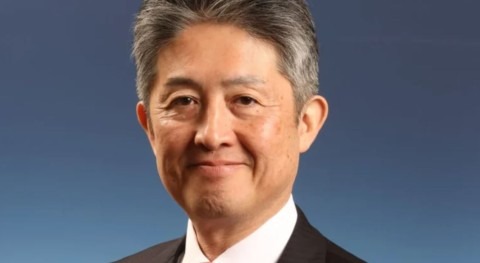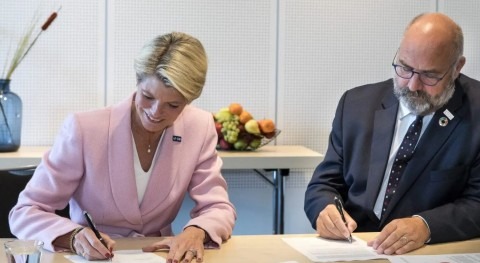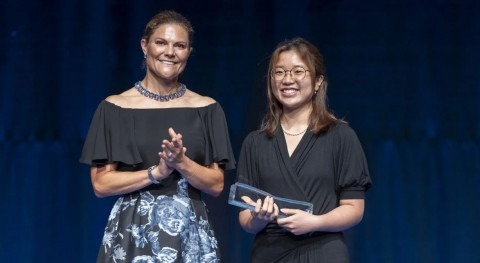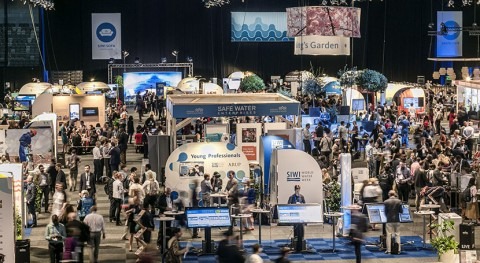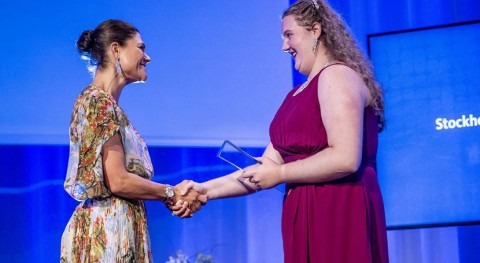The 2021 United Nations Climate Change Conference, COP26, taking place in Glasgow is about to conclude after two busy weeks of conferences, debates and events about all issues related to global warming, including talks to raise awareness of the often-underestimated role of water in climate mitigation. For the first time since the opening COP meeting was held in Berlin in 1995, the water community, led by SIWI, came together to debut the Water & Climate Pavilion at the conference. We had the chance to speak with Jennifer Jun, Senior Manager International Policy SIWI, and responsible for the creation of the first-ever Water Pavilion, about the results of this UN Climate Change Conference and the events organized by the water community, which have united as one voice and created the Water Pavilion.
Question: Water is the primary medium by which we feel the effects of climate change, yet water has played a secondary role in the past global climate conferences. Why do you think this is?
Answer: That is a very good question. One reason might be because people tend to forget how dependent we are on nature, including the water cycle. The climate discussions in settings such as the COP often centre around technical solutions to reduce emissions, not on how humans and ecosystems can become more resilient.
But now we are starting to see a shift, both because there is a clearer understanding of how people experience climate change and its effects firsthand - more droughts and floods for example - and because the science behind climate change has become crystal clear. The Intergovernmental Panel on Climate Change, IPCC, recently has placed much more emphasis on how global warming impacts the water cycle. We really need this science-based understanding to make the most effective policy choices.
Countries can find much more effective climate solutions if they manage shared water resources jointly
Q: There will be a Water Pavilion in this year’s COP26 for the first time. What do you hope to achieve with this pavilion?
A: The aim is to deliver cutting edge, science-based advice to climate decision-makers. The Water Pavilion is located in COP26’s Blue Zone where negotiations take place. But we are also live streaming different events so that people around the world can learn more about the central role that water plays in the climate crisis. There are many powerful water-related climate solutions that countries, communities and companies should learn about and start implementing. At SIWI we are working closely with different sectors to bring about that change.
Q: What water companies, organizations and governments helped make the Water Pavilion a reality?
A: We are very proud that more than 30 organizations have co-created the Water Pavilion so that the water community is speaking with one voice. SIWI played a leading role in mobilizing this community of partners and operationalizing the idea, together with the Alliance for Global Water Adaptation (AGWA), CDP, Global Water Partnership (GWP), and the International Union for Conservation of Nature (IUCN)
Q: What results would make COP26 a success in your opinion?
A: COP26 is the first time the Paris Agreement is really put to the test. Success would mean reaching agreements on how it should be implemented and financed, in a manner that is perceived as credible and fair also by the countries that are hardest hit by climate change. Another measure of success is if countries really strengthen their commitments to keep the 1.5-degree goal alive.
Water is conducive to inclusion, efficacy, and efficiency. Many water-related climate solutions manage to simultaneously reduce greenhouse gas emissions and strengthen the resilience of people and communities, which is exactly what the world needs.
SIWI is now actively contributing to new research on how water is also essential to strengthen climate mitigation
Q: SIWI mentions that many countries are still unaware of the powerful water-related solutions that exist to combat the effects of global warming. Why do you think this is?
A: The most important point we want to make is that water-related solutions are needed both to combat the effects of global warming and to cut greenhouse gas emissions. This is new – traditionally water has only been associated with climate adaptation. SIWI is now actively contributing to new research on how water is also essential to strengthen climate mitigation.
I think this is one reason why water-related solutions have been overlooked, the climate debate is often much more focused on mitigation than on adaptation. The focus has often been very narrow, emphasizing only regulations and technical innovations to bring down carbon emissions. Both are very important, but we have often forgotten the role that nature plays and how different systems are interconnected.
Now we are starting to see a growing awareness of how people depend on healthy ecosystems to bring down carbon emissions and protect us from extreme weather events. The established siloed way of thinking is also increasingly challenged, many sectors depend on water and need water knowledge to become more resilient. The world needs more sustainable food systems and a fast transition to green energy, but this is only possible if water perspectives are taken into account.
Q: Why are Nature-Based Solutions essential for climate adaptation?
Nature-based solutions are essential for both climate adaptation and mitigation. Nature might be able to help with one-third of the greenhouse gas reductions needed by 2030. Nature-based solutions can help strengthen nature’s ability to store carbon, which is important since there are now worrying signs that this ability appears to be weakening, as reported by the IPCC in August. But many of the same solutions also reduce the impact of global warming. Healthy wetlands sequester carbon but they also buffer against flooding and drought. Forests can recharge and clean water, and they give food and livelihoods. Farmers become more food secure by investing in improved water management.
Q: SIWI has always advocated for transboundary water management. Why is this important in the face of climate change?
A: About 40 per cent of the global population live in a transboundary river basin and depend on what happens upstream. Countries can find much more effective climate solutions if they manage shared water resources jointly. Not only does this give them more financial muscles, but it greatly improves efficiency. How one country treats a shared river, lake or groundwater aquifer has great implications for their neighbours relying on that same water source. One country’s investment in the restoration of a watershed could for example be undone by pollution or damming upstream. Countries need not only to understand more about opportunities and tradeoffs but also to discuss these openly. By doing so, they can improve their climate policies and reduce the risk of mistrust between neighbours.




